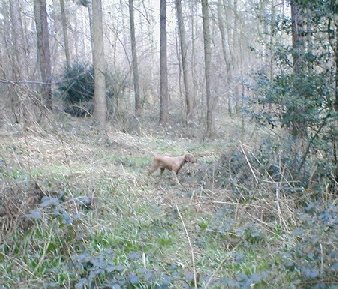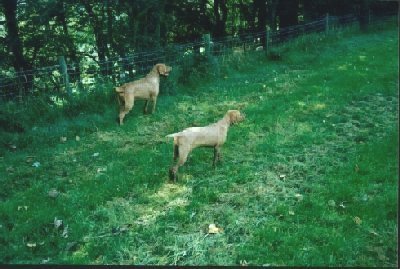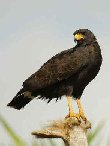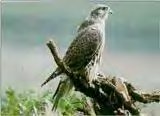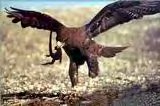The Working Hungarian Wirehaired Vizsla
Breed Standard
About the Breed
About Me and the Dogs
Home Page
View our dogs
History of the Breed
History of the Breed in the United Kingdom
The breed at work -
Shooting
Falconry
Deer Stalking
Puppy rearing
Variations in Coat
General Information
Links to Other Gundog Sites
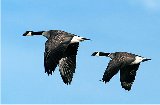
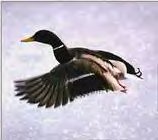
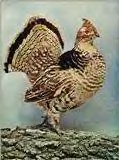
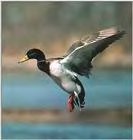
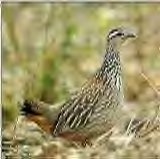
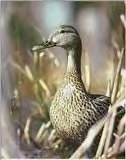
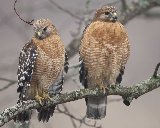

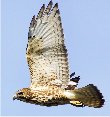
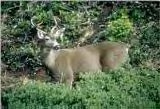
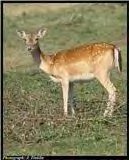
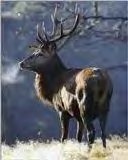
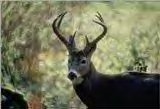
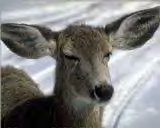
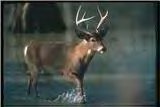
HUNTING WITH GUNS (SHOOTING)Shooting is a popular country sport, it is a fundamental part of rural life. There are four main types of sporting shooting with shotguns in the UK ROUGH SHOOTINGThis is my favourite and what I enjoy most for working my dogs. It is an informal type of shooting, in which the guns 'walk up' their quarry in field hedgerows, the quarry might include game birds, wildfowl, hares etc. The dogs hunt for them, then point and after the Guns have shot, they retrieve. DRIVEN SHOOTThis is the formal type of bird shooting, normally for pheasant, partridge and grouse, run on estates. A line of beaters walk through the undergrowth usually with their dogs and drive the birds towards a line of Guns, once shot, other gundog handlers dogs 'pick up' the birds. The days shooting is organized by a gamekeeper. WILDFOWLINGThis involves the pursuit of wild duck or geese on the marshes and inland waters, it is very physically demanding and requires great skill in identifying quarry and understanding weather conditions. Much wildfowling is organized and controlled by local wildfowling clubs. PIGEON SHOOTINGPigeons can be a very serious agricultural pest. They are generally attracted to the Shooting area by decoys and then shot from a hide. SEASONSThe seasons are laid down by law for the shooting of many species. BEATINGIf you are interested in beating - on my information page you will find a Beaters Organisation
|
The Hungarian Wirehaired Vizsla and FalconryFor the sport of falconry, we feel the Hungarian Wirehaired Vizsla is best suited to those people who fly hawks (correctly known as the Austringer) as opposed to those who fly falcons (Falconers). Generally speaking, the Austringer, who hunts with a hawk, is the equivalent of the rough shooter of the shooting world. For any breed of dog to be of use within this ancient art, then it must possess a number of basic traits. Firstly they must possess a strong desire to hunt and find game. As the sport takes place within a variety of landscapes, the dog must be equally at home working over whatever the terrain, be it farmland or mountainous moor. It must have excellent scenting abilities and be experienced enough to recognise the delicantes differences which the various game species sought possess. Once the game is found, then the dog must be steady and biddable enough to point and hold point for however long is necessary. This period can be considerable, especially so when falcons are being flown. Only when commanded to do so must the dog be allowed to flush the hidden quarry, after which it is expected to sit or drop to flush. Any excitable breed which courses flushed quarry is a liability rather than an asset to the sport. After twenty years of breeding, training and working various H.P.R. breeds for our hawks, we personally believe that the Wirehaired Vizsla is a very special breed ideally suited to the Austringer's needs. We will never return to any of the other H.P.R. breeds again. The Wirehaired Vizsla is possessed of all the attributes described. As with other breeds, it is simply a case of correct nurturing, training and communication to bring them out. One exceptional aspect of this breed is its excellent temperament and burning desire to please. So what other attributes does it have for the Austringer? Generally, this is a breed that works at a distance that usually allows contact and control to be maintained, without the need, as with some other breeds, of having excessive whistle or, worse, verbal commands. Its coat gives it the advantage over some of the smooth coated breeds, affording protection from the ravages of sharp, prickly cover. As you would expect from a breed widely used in its native country as a wildfowling companion, it seems to make it impervious to the cold and wet. It is a gentle breed, not suited to the heavy-handed, which has a natural affinity and inbred respect for hawks. If you are considering what breed best suits you and your hawking, consider the Hungarian Wirehaired Vizsla. By Roy Bebbington.
Deer StalkingAMBER'S FIRST STALK 7am slid myself out of bed, opened my curtains and saw that during the night there had been a small dusting of snow. I wasn’t to be put off by this. I went down stairs in my usual manner, that is to say being very quiet but still managing to wake the whole house up. After two cups of coffee I gathered my things, put Amber in the car and set off for the hill. Amber was nine months old and I thought it would be a good time to start her on the real thing. She had passed all the dummy tests I gave her with flying colours. We arrived at the farm just as it was getting light. I let Amber out of the car and gave her a run round the yard as it takes her five minutes to get her head together; she is not the best of travellers. I started to walk over the first field and when Amber started to move very cautiously I lifted my binoculars and scanned ahead. There was not a thing in sight so I gave Amber a tap on the rump and whispered steady. We moved slowly forward and out of the ditch sprang two deer! I could only watch with my mouth open, cursing my own stupidity. I carried on up the hill and looking ahead I could see a small brown shape. Lifting my binoculars I could just make out that it was a deer but the sex of the animal was not clear at this point. I lifted my hand to my chest with the palm facing Amber. At that she sits, and, once I moved away heading towards the deer, it took me at least 20 minutes to get close enough for a shot. I lay down on a heather knoll and looked back and there she was still in the sit position. Everything was going to plan. I fired a shot and moved towards the deer when out of the corner of my eye I saw a second deer moving away to my right taking my attention away from the first beast. The second deer jumped into the trees and was gone. I raised both my hands out to my side and Amber came running. At this point I put her back in the sit position as I wanted to retrieve the deer myself. Up and down the hill I walked and not a sign. I would now try Amber. It was now all or nothing. Find it went the command. Up she leapt and away she went, covering the ground like a dog following a bitch in season. She then cut back on her trail over a small mound and there it was, almost invisible against the winter heather. Not a bad day's work for a pup. P.S The reason I did not want her to look for the deer straight off was simple. I did not want her to think that if I fired the gun she could just run in. To date she has found for me eleven lost deer and also she has been called out four times, all successfully. I will tell you about one special occasion in my next report. DAVID QUARRELL |
|||
 Buck at work Buck at work |
|||
| Next page | |||
| For article "A Morning Out" by Ged Brierley |
This document maintained by Irishhounds@aol.com.
